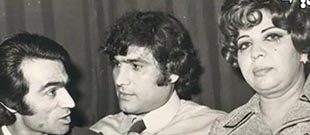As revolutionary fervor spread in 1978 and 1979, the Shah attempted to mollify public anger by arresting former officials, including Hoveida. After the Shah fled Iran in January 1979, the newly established Islamic Republic detained Hoveida and put him on trial in a revolutionary court. The trial, presided over by the notorious cleric Sadeq Khalkhali, was widely criticized for its lack of due process. Hoveida was accused of “corruption on earth” and “fighting against God,” broad charges commonly used during the revolutionary tribunals.
Before the sentence could be formally executed, Hoveida was shot—either by Khalkhali himself or by another cleric, Hadi Ghaffari—during a court recess. His body was kept in a morgue for months before being buried in an unmarked grave. The circumstances of his death remain a point of contention, symbolizing both the brutality of the new regime and the tragic downfall of a man who had devoted his life to public service.
Hoveida’s legacy remains complex and contested. Supporters remember him as a competent and incorruptible public servant who helped modernize Iran and improve the lives of millions. Detractors criticize him for presiding over a government that was unresponsive to democratic demands, complicit in censorship, and increasingly authoritarian in its methods. His life and career serve as a prism through which to view the broader successes and failures of the Pahlavi state.
The opening of the 200th city and village store, while a small event in itself, captures the essence of Hoveida’s vision for Iran: orderly, modern, centrally planned, and focused on material development. It also reveals the limitations of that vision. While the stores made goods more accessible, they did not address deeper political grievances or foster participatory governance. Like much of the Pahlavi reform program, they were imposed from above, rather than emerging from grassroots needs or democratic engagement.

